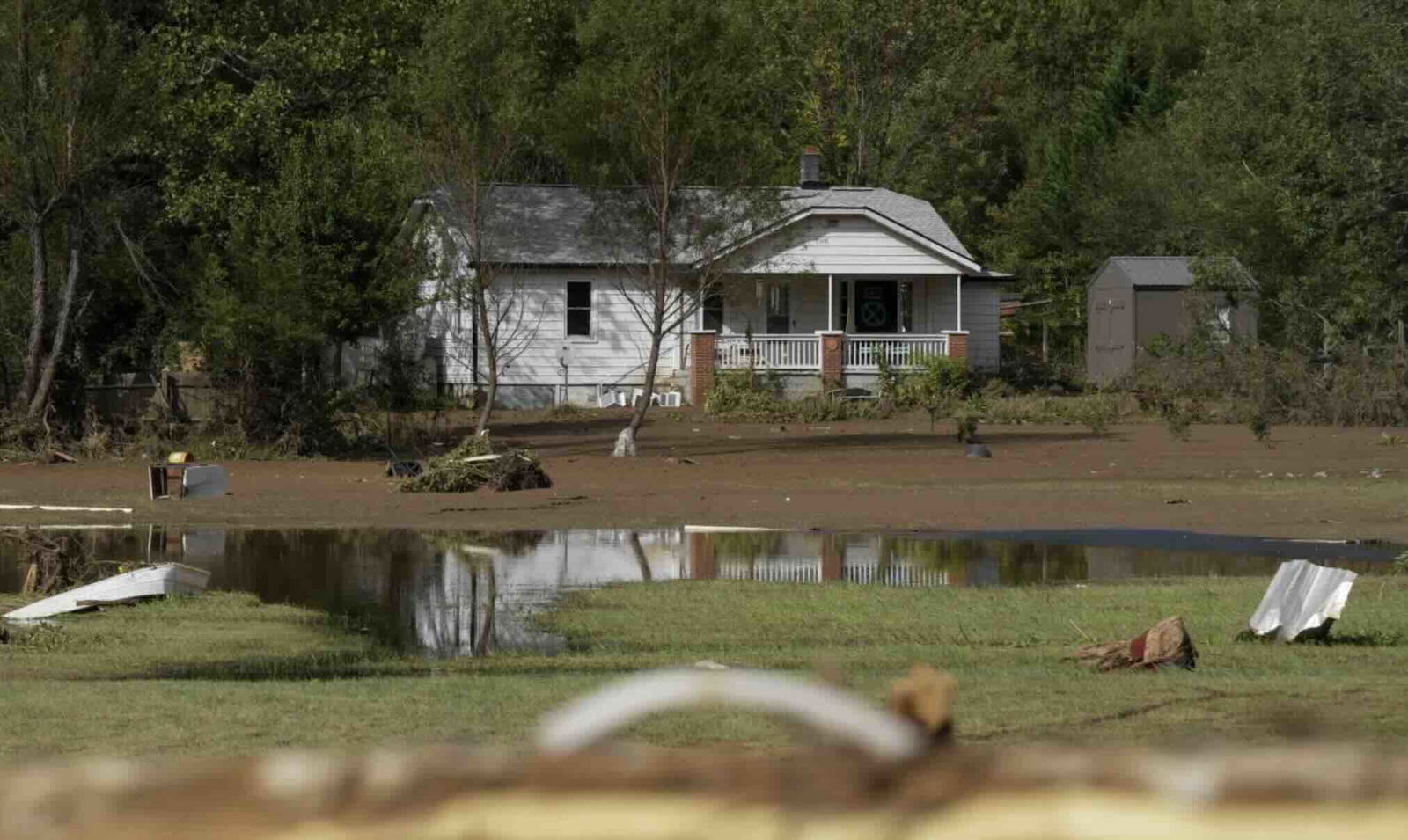With the ongoing climate disasters affecting so many people in southeastern states like North Carolina and Florida, and similar events elsewhere around the world, long-lasting emotional and physical threats from climate change can also impact gender dynamics, especially instances involving violence against women.
This, according to a new study that reveals the troubling link between climate change and rising violence against women worldwide. Professor Jenevieve Mannell and Poppy Tombs from University College London first published their team’s findings in PLOS Climate. They investigated how climate-related crises, such as storms, landslides, and floods, may be associated with increased rates of intimate partner violence in the two years following these events.
Climate Change and Violence Against Women Around the World
The 2012 report “The Hidden Disaster” found that police-reported domestic violence increased by 53 percent in the wake of the Canterbury earthquake in New Zealand. In the southern United States, the rate of physical victimization of women nearly doubled after Hurricane Katrina. Additionally, the Women’s Agenda’s Climate Load report released last year highlighted the heightened risks of domestic and family violence that women faced following bushfires and floods in Australia.
In recent years, countries like Samoa and Fiji have seen similar correlations when it comes to climate change and violence against women, and are making a difference by instating policies to protect women living within their own country.
Fiji in particular faces the growing threat of climate change. The country has been battered by increasingly intense cyclones in recent years, bringing about severe social and economic challenges. Unfortunately, these disasters have also heightened the risks of violence against women and girls, adding another layer of hardship to Fiji’s ravaged communities.
With support from the UN Trust Fund to End Violence against Women, femLINKpacific (FemLINK) is making waves in Fiji by empowering rural communities to combat all forms of violence against women and girls. This inspiring project harnesses women-led media platforms and strengthens local feminist networks, raising awareness about the root causes of violence—especially during humanitarian crises.
The Study
The researchers analyzed data from 363 surveys conducted across 156 countries between 1993 and 2019, focusing on women with current partners. Intimate partner violence was defined as physical and sexual violence experienced within the past year. The team also collected climate shock data from 1920 to 2022 in 190 countries, examining the relationship between these events and intimate partner violence while accounting for each country’s economic status.
The findings revealed a strong correlation between intimate partner violence and specific climate shocks, such as storms, landslides, and floods. By contrast, other events, like earthquakes and wildfires, did not show a clear link. However, countries with higher GDP had lower rates of intimate partner violence.
“Existing evidence has found that when a woman experiences a climate-related event, she is more likely to experience violence in some countries and for some types of violence, but not others,” says Professor Jenevieve Mannell from UCL Institute for Global Health.
“We set out to explore what was happening at a national level to help inform international climate change policy.”
The Outcome
The team was unable to determine specifically why various climate shocks have more of an impact on intimate partner violence. The overall outcome suggested that different climate shocks may take varying amounts of time to impact violence, and this may not have been fully captured within the two-year window due to limited data availability to which the research team has access. Consequently, the researchers are urging countries around the world to collect data on violence against women more consistently and regularly.
“A small body of evidence shows that heat and humidity increase aggressive behaviors, including violence. Climate-related disasters increase stress and food insecurity in families in ways that can lead to increases in violence. They also reduce the social services often available for dealing with partner violence, such as police and civil society who are more focused on the disaster,” adds Professor Mannel.
“At the same time, governments may put in place shelters for disaster relief, which are often overcrowded and unsafe, without thinking about the risks of sexual violence.”
Solutions
The researchers from University College London strongly suggest solutions to help curb these issues, including mentioning “violence against women” in Nationally Determined Contributions and allocating finances to develop Climate Change Gender Action Plans, like many other countries have done in the past to help alleviate the effects of gender-based crimes. Women should also be considered during the initial planning phase of countries’ disaster planning processes.
“All of this happens more often and with increased severity in countries that have patriarchal gender norms,” says Mannel, “and where the use of violence against women is widely accepted as normal behavior.”
The new study, “The impact of environmental shocks due to climate change on intimate partner violence: A structural equation model of data from 156 countries,” appeared in PLOS Climate on October 2, 2o24.
Chrissy Newton is a PR professional and founder of VOCAB Communications. She currently appears on The Discovery Channel and Max and hosts the Rebelliously Curious podcast, which can be found on The Debrief’s YouTube Channel on all audio podcast streaming platforms. Follow her on X: @ChrissyNewton and at chrissynewton.com.

